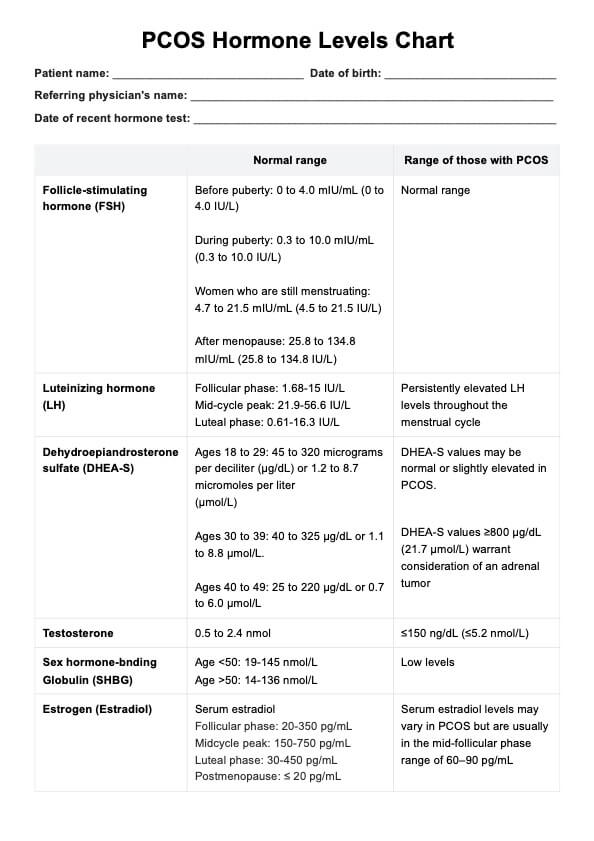Gynecologists, endocrinologists, and PCOS specialists are the healthcare practitioners who typically request a PCOS Hormone Levels Chart.

PCOS Hormone Levels Chart
Ensure that you have a PCOS Hormone Levels Chart on hand when analyzing your patient’s results to determine if they have PCOS or another underlying condition.
PCOS Hormone Levels Chart Template
Commonly asked questions
PCOS hormone level charts are primarily used to diagnose PCOS, monitor its treatment, understand the patient's hormone levels, and finally evaluate their menstrual cycle.
The PCOS Hormone Levels Charts can be used as a reference, guide, and educational resource to teach the patient more about their hormones and possible PCOS diagnosis. Additionally, it can be used to indicate the overall results of all the testing a patient has undergone to determine if they have PCOS or not.
EHR and practice management software
Get started for free
*No credit card required
Free
$0/usd
Unlimited clients
Telehealth
1GB of storage
Client portal text
Automated billing and online payments











